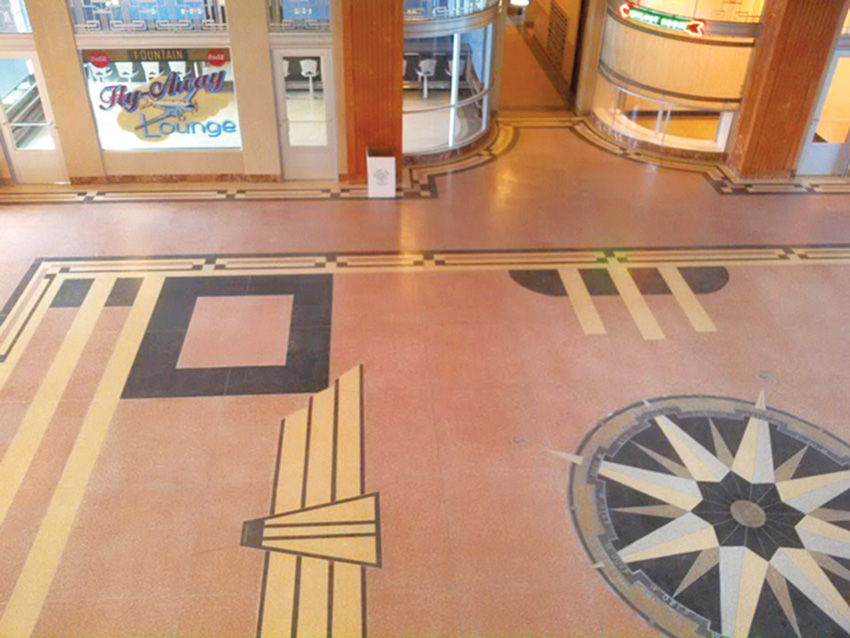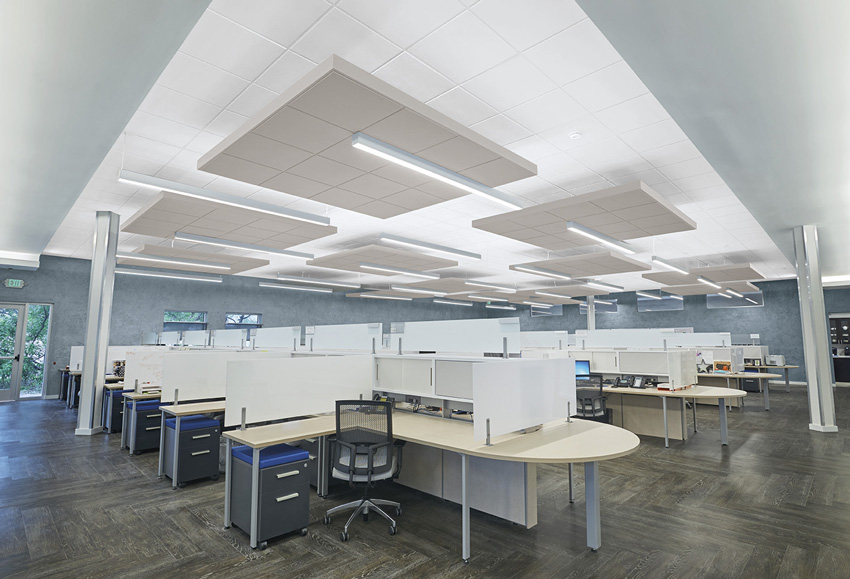125 Years of Product Innovation and Evolution
Terrazzo: Then and Now
Terrazzo was created in the mid-16th century when Venetian mosaic workers discovered a way to reuse marble remnants left over from their mosaic projects. With odd-size chips, they began to build terraces (“terrazze”) around their living quarters, giving birth to a new flooring product and providing its name at the same time.
During the following centuries, the process for creating terrazzo floors remained relatively unchanged, and the craftsmen who created them remained remarkably cohesive, clustering in and around the Friuli region of Italy. The first terrazzo in the United States was laid by these Italian craftsmen in 1890—one year before the Market and Fulton National Bank was featured in Architectural Record—in the Vanderbilt residence in New York. But, while this was a prestigious commission, terrazzo remained a niche product until the decades following World War I, when terrazzo became a flooring of choice in the United States, overtaking and replacing the use of marble mosaics. Architects in the 1920s suddenly recognized the design potential of terrazzo for the smooth, curvilinear art deco/modern styles of the period. In addition, the invention of the electric grinder in 1924 radicalized the industry, providing a finer finish, greater speed, increased accuracy, and lowered costs, all contributing to the spread of terrazzo across the United States. During the same period, metal divider strips were introduced, which allowed the creation of highly artistic and intricate patterns and designs in terrazzo floors, and also accommodated expansion and contraction of the surface to help minimize cracking.
The next evolution within the industry occurred in the 1970s with the introduction of polymer-based terrazzo, also referred to as “epoxy thin-set” terrazzo. This material provided a wider selection of colors, a thinner and lighter finished product, faster installation times, high impermeability and strength, and less susceptibility to cracking. Epoxy thin-set has become the norm for terrazzo today. Other systems include: sand cushion, bonded, monolithic, polyacrylate, and rustic. With much higher performance and sustainability characteristics than were possible in the past—and with its combination of beauty, durability, and low maintenance—terrazzo is now undergoing renaissance as a flooring product that provides both significant life-cycle benefits and virtually endless design flexibility.

Photo courtesy of National Terrazzo & Mosaic Association
Terrazzo provides virtually unlimited design possibilities and, at the same time, is durable enough to last as long as the building itself. This decorative floor at New Orleans’ Lakefront Airport terminal, for example, was under 4 feet of water following Hurricane Katrina. Unlike other materials in the terminal that suffered significant damage, the floor needed no more than a light sanding and polish to be usable again.
The Suspended Ceiling Today: High Performing, Inspirational, and Sustainable
Almost from the beginning, suspended ceilings have been used both to provide space to conceal a range of critical building systems and to control acoustics. This second function has become so commonplace that “acoustical ceiling” and “suspended ceiling” are now often used interchangeably. It is in the acoustical performance of ceilings that some of the industry’s most impressive performance breakthroughs have been made. A case in point is the introduction of new ceiling panels that combine the latest advances in sound absorption and sound-blocking technology into one ceiling assembly. Sound absorption reduces noise, while sound blocking prevents it from traveling to adjacent spaces. Today’s flexible spaces need both. If you specify a ceiling system that only optimizes noise absorption, concentration and focus will be enhanced, but the ability of the space to block sound from traveling to neighboring spaces will be minimized. Likewise, if only sound blocking is optimized, disruptions to adjacent spaces will be minimized and privacy will be ensured, but sounds inside the space may distract from focused work. An optimized mix of both absorption and blocking is the ideal solution, and ceiling systems with these characteristics are now entering the market in mineral fiber, wood, and metal. They not only enhance the acoustical performance of both open and closed office layouts, they also allow a closed office to be reconfigured into an open plan without sacrificing acoustic performance (and vice versa).
On the design front, ceilings have evolved from 2-foot-by-2-foot panels into a variety of forms and shapes, such as large-size panels, geometrics, and linear visuals, to nontraditional installations, including sloped and ceiling-to-wall transitions. Manufacturers have developed new ceiling systems that can tackle complex geometries and challenging transitions using a range of material types, colors, and finishes, while still integrating all of the performance characteristics of more conventional layouts. This allows designers to generate unique, one-of-a-kind ceiling concepts, creatively incorporating ceiling design into their holistic visions for interior spaces.
And, finally, ceiling systems are becoming more sustainable, as evidenced by the growth in environmental product declarations (EPDs) within the industry and in the support manufacturers now provide to help architects understand and qualify for environmental benefits, such as LEED points. An EPD is an internationally accepted, published report detailing the ways in which a product affects the environment throughout its life cycle. They are developed according to product category rules (PCRs) that ensure consistent data collection and analysis and provide transparency and clarity across an industry when comparing products. EPDs validate a manufacturer’s commitment to sustainability and can also help achieve LEED points, and some manufacturers provide special services and calculators to help architects identify the LEED points available for their products, including points for EPDs.

Photo courtesy of Armstrong® Ceiling Solutions
Transitioning 135 busy professionals from a 20,000-square-foot space into an 11,000-square-foot space while creating a more collaborative, productive work environment was the challenge when BrandStar, the educational programming unit for Lifetime Television, moved into a new and considerably cozier headquarters. One of the biggest concerns was how to design a bullpen area for 54 employees that fosters collaboration but still allows focused work. The answer was high-performance ceiling panels that optimize both sound absorption and sound blocking for the space.
Notice

www.armstrongceilings.com/totalacoustics

www.exceldryer.com/products_xlerator

www.guardianglass.com/commercial

www.nanawall.com

www.ntma.com









